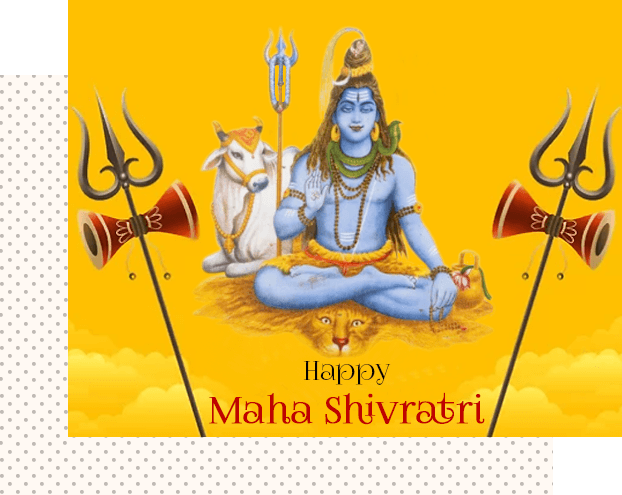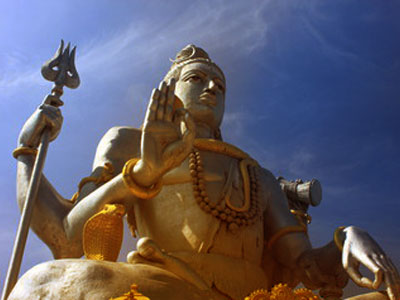Lord Shiva, one of the principal deities in Hinduism, is often depicted with various symbolic attributes that hold deep spiritual significance. Each of these elements represents different aspects of his divine nature and his role in the cosmic order. Let's explore the reasons behind some of the significant attributes that Lord Shiva is commonly depicted with:
Trident (Trishul): The trident symbolizes the control over the three fundamental aspects of existence - creation, preservation, and destruction. It represents the power of Shiva to maintain cosmic order and his mastery over time. The trident also serves as a weapon that represents his ability to destroy evil forces and ignorance.
Deer Skin (Mrigavstra): Lord Shiva is often depicted wearing a deer skin, which signifies his renunciation and detachment from worldly desires. It represents his role as a yogi and ascetic who has transcended material attachments and seeks spiritual realization.
Tiger Skin (Vyaghracharma): The tiger skin worn by Lord Shiva symbolizes his victory over animal instincts and primal desires. It represents his ability to tame the wild and harness the energies of the natural world for higher spiritual purposes.
Crescent Moon (Chandra): The crescent moon adorning Lord Shiva's matted hair signifies the passage of time and the lunar cycle. It also represents the peaceful and soothing influence of the moon, which counterbalances the fiery nature of his third eye.
Cobra (Naga): Lord Shiva is often depicted with a coiled cobra around his neck, which represents his control over deadly creatures and venomous forces. The cobra also symbolizes his ability to transcend fear and mortality, signifying his immortality as the Supreme Being.
Blue Throat (Neelakantha): The blue throat of Lord Shiva is a result of him consuming the poison (Halahala) during the churning of the ocean (Samudramanthan). It represents his willingness to take on the burdens of the universe and protect it from destruction.
Ash (Bhasma): Lord Shiva is known for smearing his body with sacred ash (bhasma) from the cremation grounds. It represents his transcendence of material existence and the transient nature of life. It also signifies the eventual dissolution of all things into ashes, reminding us of the impermanence of the material world.
These attributes and symbols remind devotees of Lord Shiva's multifaceted nature and his role as the cosmic lord who maintains the balance between creation and destruction. Each aspect holds a deeper spiritual meaning and serves as a source of inspiration for seekers on the path of enlightenment and self-realization.
Importance of Maha Shivratri
Mahashivratri will be celebrated on Friday, 8th March, 2024 to Saturday, 9th March, 2024 and this day is a New Year for spiritual seekers. Mahashivratri is the day for nurturing spiritual growth and attainment of material things as well. Shiva is everything, Shiva is everywhere. Praying to him on his special auspicious day results in blessings which translate into prosperity, peace of mind, spiritual enhancement and progress, as per wish of Mahadev.
Lord Shiva is the Principle, and Shivratri is an opportunity to revere this eternal truth - Shivoham – Meaning I am Shiva, I am the Principle, and I am everything. I am the truth, benevolence, eternity, beauty.’ On this night, when the constellations are in a favourable position, it is very auspicious for meditation. In ancient times, people used to say if you cannot meditate consistently, do it at least once a year on the Shivratri night. By doing this you wake the divinity that is within you. When we chant Vedic mantras on this night, these mantras bring a big change in the environment.
Worshiping on Shivratri cleanses your soul, makes your mind pure, increases the positive vibes, and destroys negativity, both within you and outside of yourself.
- Maha Shivratri is on Friday, March 8, 2024
- Chaturdashi Tithi Begins - 09:57 PM on Mar 08, 2024
- Chaturdashi Tithi Ends - 06:17 PM on Mar 09, 2024
- Ratri First Prahar Puja Time - 05:42 PM to 08:44 PM
- Ratri Second Prahar Puja Time - 08:44 PM to 11:46 PM
- Ratri Third Prahar Puja Time - 11:46 PM to 02:48 AM, Mar 09
- Ratri Fourth Prahar Puja Time - 02:48 AM to 05:50 AM, Mar 09
- Nishita Kaal Puja Time - 11:22 PM to 12:10 AM, Mar 09
Duration - 00 Hours 49 Mins - Shivaratri Parana Time - 05:50 AM to 02:44 PM, March 09
Shivratri Contents

History
Learn about the colorful origin of the Maha Shivratri festival that is steeped in sacred legends.

Dates and Timings
Know about the Shivratri dates of upcoming years, till 2040. Also check the shubh puja muhurat for the present year.

HD Wallpapers
Fantastic wallpapers themed to Shivratri to adorn your PC screen with and even send to your loved ones.

Greeting Cards
Send festive greetings and hearty wishes to your near ones with these exquisite e-cards themed to Shivratri
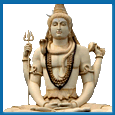
About Lord Shiva
Acquaint yourself with Lord Shiva and know the unique position He enjoys in the hierarchy of the Hindu pantheon.
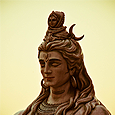
108 Names of Shiva
These 108 Sanskrit words are names of Lord Shiva and each signify one of His particular attributes.

Celebrations
Know how and when Maha Shivratri is observed and the ways in which Lord Shiva is worshipped on this great night.
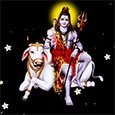
Animated Wishes
Make your own Shivratri wishes with animated flowers & starfield simulation & share it through Facebook and Whatsapp.
